6 Cool Products Built During Company Challenges
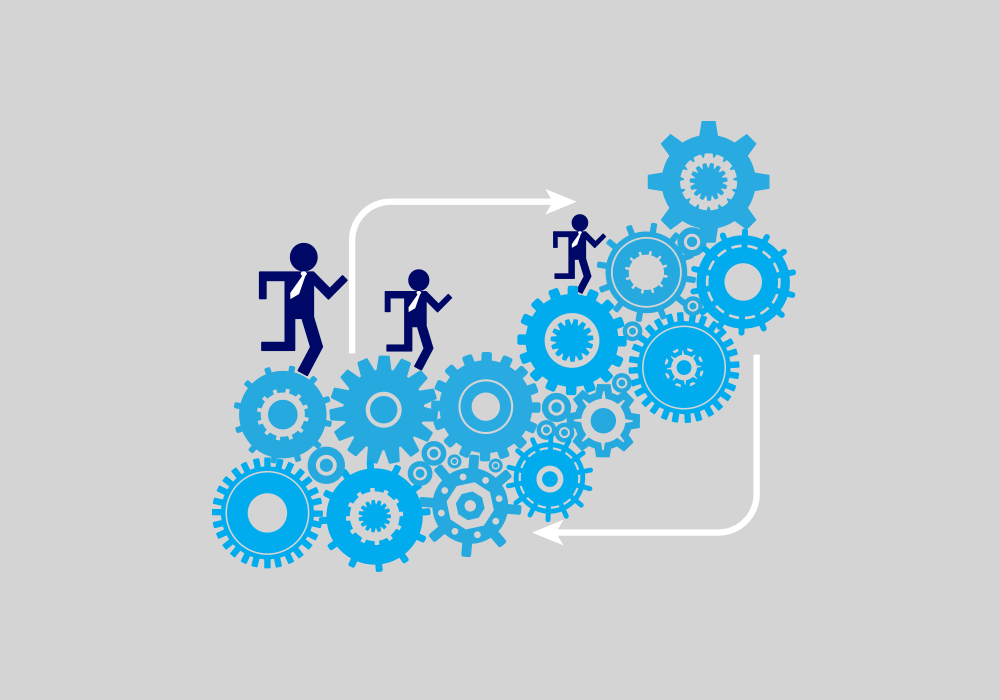
Every fall, Cornell Tech students respond to “how might we…” questions posed by leading startups, companies and organizations in NYC as part of Company Challenges.
Cross-program teams work together with guidance from their company mentor to answer these questions using technology. The fall semester course is designed to give students experience working through real-world problems to develop viable solutions.
“From the company challenge with AppNexus, I learned the importance of holistic thinking in solving a problem,” Claire Opila ‘17, a connective media student, said. “It is critical to understand the entire ecosystem that gives rise to this issue so that it can be properly and entirely addressed.”
Choose Your Challenge
App Nexus: How might we help knowledge-workers develop and maintain a state of “flow”?
Bloomberg: How might we improve and productize sarcasm detection?
Robin Hood Foundation: How might we create a new online marketplace that harnesses the power of the sharing economy to benefit low-income wage earners?
Weight Watchers: How might we tackle teenage weight loss without teens feeling like they are on a program?
The App Nexus Challenge: How might we help knowledge-workers develop and maintain a state of “flow”?
In the modern workplace, technology has exponentially increased the number of services competing for our attention. To combat the endless stream of interruptions and notifications distracting workers throughout the day, the 2016 company challenge from AppNexus asked Cornell Tech students to facilitate focus in the workplace.
In response the challenge, Team App Nexus looked outside of technology to approach the problem holistically. After observing and interviewing developers at App Nexus in their natural work setting, the team began by testing a few initial ideas. They soon realized that difficulty maintaining focus was both a real-world and a technological problem. That is, the office layout and culture is as much an issue as all of the emails, texts and ‘slacks’ people receive. This early realization helped them determine that they needed both physical technological components to address real-world and digital distractions. What resulted was an application called “Flow” that enables highly technical workers to maintain focus and increase productivity.
With the iMac and iPhone application “Flow,” users trying to focus on tasks receive notifications (text, email, Slack, etc) in the form of customizable digests. The iPhone application is propped up by a tripod on the user’s desk to show colleagues when they do not want to be disturbed. Users not “in flow,” are able to see statuses of other team members within the app so they know who is currently available or unavailable to chat. The goal of this workflow is to carve out the space and time for people to truly be productive, while still staying engaged in the workplace.
Bhagya Canumalla, Connective Media ‘17; Jeehyun Kim, CS ‘16; Claire Opila, Connective Media ‘17; James Shen, MBA ‘16; Vivek Sudarsan, CS ‘16
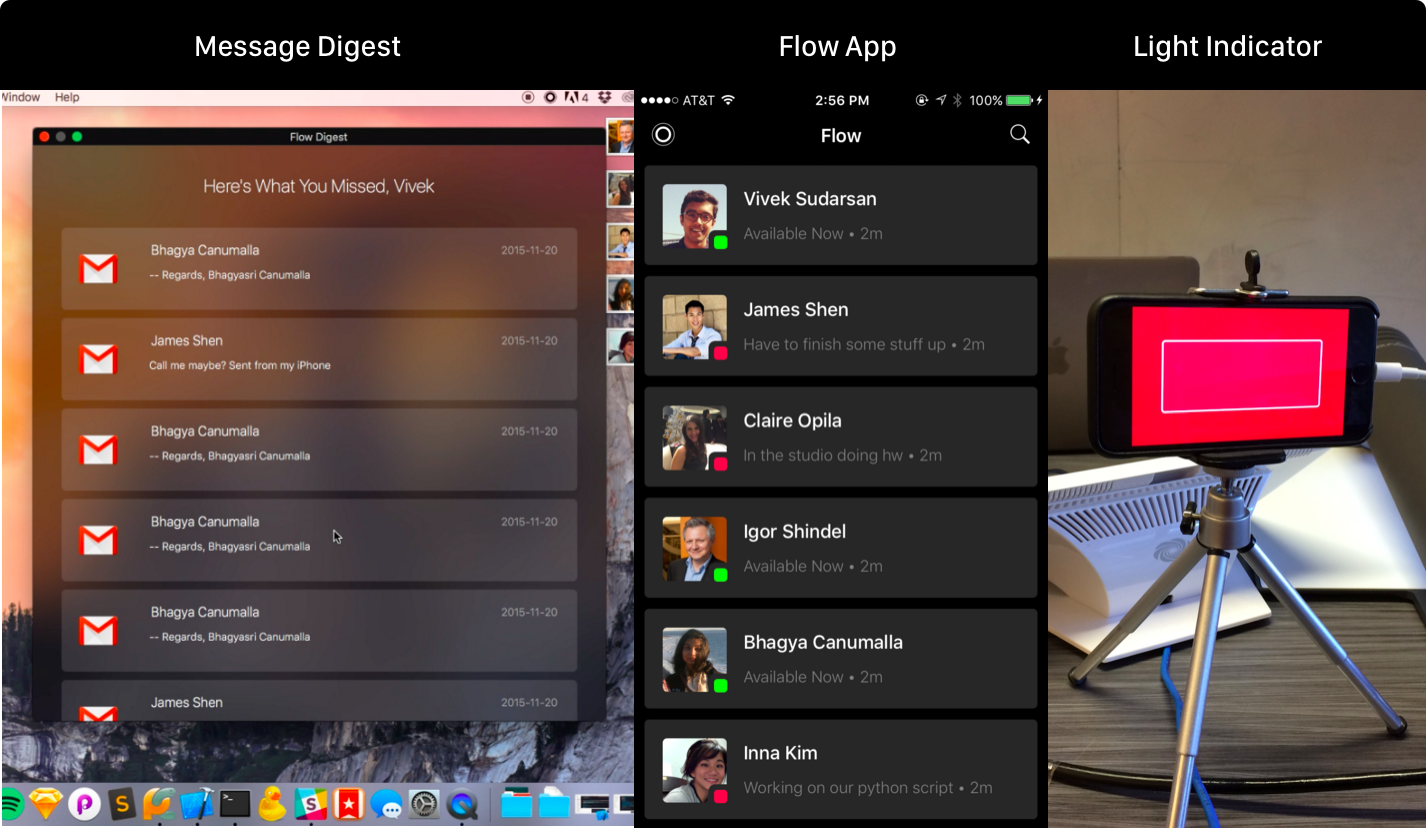
The Bloomberg Challenge: How might we improve and productize sarcasm detection?
If you’ve ever read the Amazon reviews for the Hutzler 571 Banana Slicer, you understand why companies might want to weed out sarcastic comments.
That’s the problem Team Bloomberg sought to solve.
The journey to TrueRatr was quite multi-directional.The team first imagined TrueRatr as a sentiment analysis engine (similar to Crimson Hexagon & Radian 6), then as a potential dating app assistant, then as a cyberbullying/troll detection library, then as a non-profit open source project (the Open Sarcasm Project ala the Human Genome Project).
The twists and turns of Team Bloomberg’s product development roadmap reflect the discovery-oriented approach that that Greg Pass and Leland Rechis advocate in the studio.
It was only after the first Studio Sprint — a designated 24-hour period every month for teams to make rapid progress — that the team decided to target sarcasm detection in online reviews. They were first drawn to the prospect of detecting sarcasm in Amazon product reviews, but it proved to be too broad a space (too many banana slicers), so they refocused to app reviews on iTunes.
At each stage, the team evaluated the feasibility of creating a working prototype within the 3-month semester. Given the fact that data on sarcasm is hard to find, they needed to zoom in on one area to identify patterns of sarcasm, collect sarcastic and non-sarcastic data and then train their model. Using Amazon’s Mechanical Turk marketplace to collect some of this data, their eventual training set had 1,188 reviews.
In a nutshell, their TrueRatr engine does 3 things:
- Broke down product review text into smaller parts or “tokens”.
- Performed sentiment analysis on each of these “tokens” and identified sentiment shifts (e.g. “I love being yelled at! Yay!” would be positive-negative-positive (I love – being yelled at – Yay!)
- Tested these patterns of sentiment shifts against a Machine Learned pattern, that they had trained on the previously-collected data.
If the product finds any reviews to be sarcastic, it throws them out, and recalculates a rating for an app, termed its “True Rating.”
Read more about TrueRatr in ArsTechnica.
Karan Bir, MBA ‘16; Ming Chen, CS ‘16; Hesed Kim, MBA ‘16; Shreyas Kulkarni CM ‘17; Brendan Ritter CS ‘16; Mengjue Wang, Connective Media ‘17
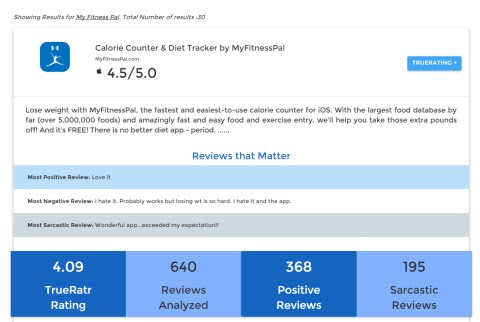
The Citi Challenge: How might we design an authentication experience in which [the attacker] cannot figure out when and where the authentication challenge occurs?
Passwords. Everybody has them and everybody forgets them.
So when Citi challenged a team of Cornell Tech students to improve this system, it wasn’t an easy task.
In response to this challenge from Citi, students developed CitiMesh, a passwordless authentication system that creates a digital fingerprint for a user based on their Internet of Things network and gathered data points.
Unlike password authentication systems, the Citimesh user doesn’t have to remember anything, as the system makes the whole experience passive and seamless. Because there is no password to guess or steal, CitiMesh is more resilient to system-wide database attacks than a password protected system.
CitiMesh was designed for enterprise and commercial use. The software connects a user’s bluetooth-enabled devices using beacons to gather IP address and geolocation information. Then, a confidence score is calculated to determine likelihood of a user being the correct person accessing the account. If the user’s confidence score is above a safe threshold set by Citi, then the user simply presses the confirm button that appears on their smart device to access their account. This approach provides the user with a seamless and more secure authentication experience, without the anxiety of having to remember complicated passwords.
Murat Akdeniz, MBA ‘16; Chloe Eghtebas CS ‘16;, Carlos Fernandez, MBA ‘16; Jocelyn Kong, CS ‘16; Sasinda Premarathna, Connective Media ‘17
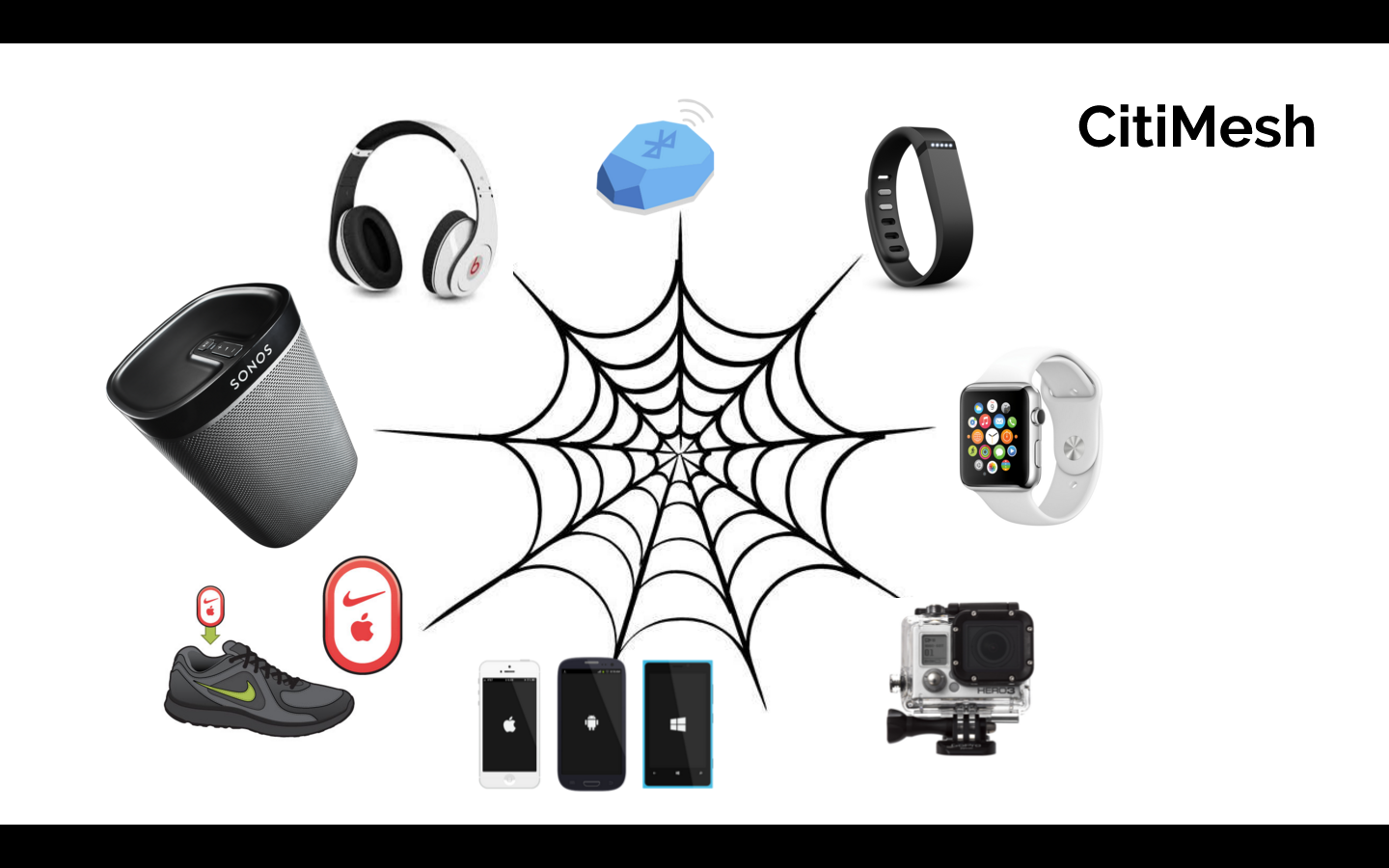
The Robin Hood Foundation Challenge: How might we create a new online marketplace that harnesses the power of the sharing economy to benefit low-income wage earners?
It seems like every day a new startup pops up to do your laundry or clean your home. Beautifully designed apps and websites make it convenient for users to order their services seamlessly.
But what about low-wage workers who depend on customers to support themselves and their families? Without the technical skills to build an app, they are often left behind and replaced by sleeker, simpler competition.
This was the Robin Hood Foundation’s challenge for one Cornell Tech team.
The team first unpacked this challenge by talking to several Robin Hood grantee organizations to better understand their experiences working with the community of low-income wage earners in NYC.
The team then looked for common themes to build the product concept. Initially, these conversations led them to believe the factors preventing inclusion in the sharing economy were the lack of bank accounts, awareness and access to technology. However, these notions proved false. In fact, the team found that these workers, despite having bank accounts and Android phones, believed that the current online service opportunities could not provide a living wage.
Team Robin Hood Foundation decided to leverage the power of worker-owned cooperatives — a proven mechanism to lift low income workers out of poverty — for the digital sharing economy.
In a co-op, workers join together to create a brand and provide a single service, like house cleaning, for which they can demand a higher price. Additionally, the worker-run and owned co-ops offer workers a community of support, the opportunity for training, autonomy and accountability.
After discovering the empowering world of worker cooperatives, the team decided to build Coopify, a device-agnostic mobile-first platform, which was uniquely targeted towards co-ops. The app gives co-ops the ability to coordinate their services and scale their business. To help the group understand their target user, The Center for Family Life worked with the team to coordinate focus groups with co-op members. They tailored a solution to meet the needs of coop members with features that included support for multiple languages and added functionality to allow for cash payments.
As the fall term came to a close, Robinhood recognized that the Cornell Tech student-developed solution could be viable in the market brought on staff for further development to bring the app into production. With the continued help of Center for Family Life, the Robin Hood Foundation plans to launch this summer.
When it’s released, Coopify will allow co-ops to compete against other service apps and transform this socially-responsible framework into a platform that leverages technology and empowers workers.
Read more about Coopify in Fast Co.Exist.
Melina Diaconis, MBA ‘16; Ron Fisher, MBA ‘16; Harrison Gregg, Connective Media ‘17; Ashwin Ramanathan, CS ‘16; Jared Sharfin, MBA ‘16
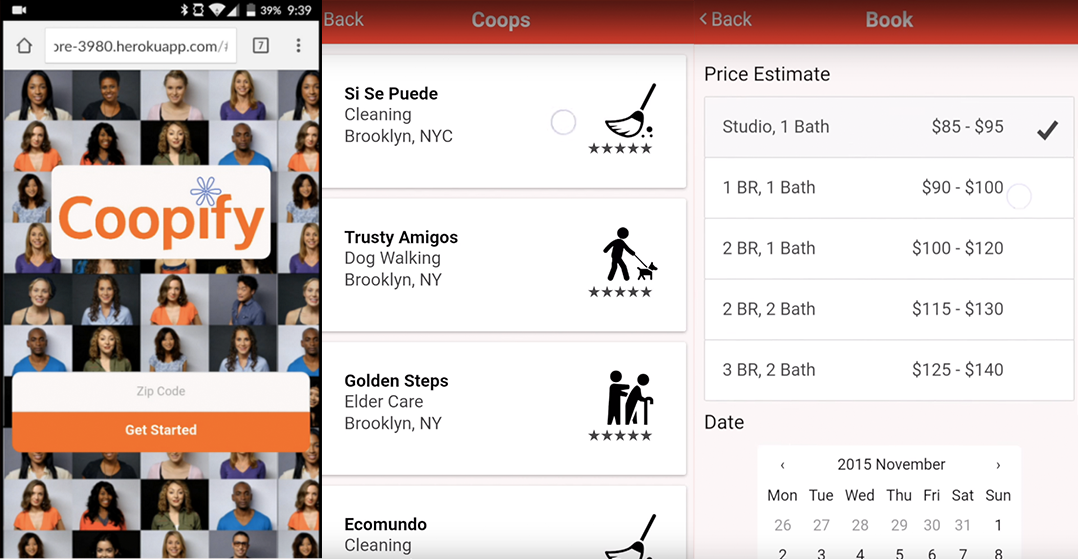
The Weight Watchers Challenge: How might we tackle teenage weight loss without teens feeling like they are on a program?
Ever tried getting a teenager to do something? Now imagine trying to encourage them to eat healthy or exercise regularly. This is the challenge Weight Watchers posed to our students..
The Weight Watchers team realized that to attack teen obesity, they needed to broaden their focus beyond weight loss and approach the question more holistically. How could they inspire teens to make healthy choices? With 44 million teens living in the US today, the team hoped to develop an app that had the potential to have a substantial impact on teens and their families.
They began by focusing on the end-users of this challenge, speaking to 80 teens over the course of the semester. The team then coupled these user studies with external research on teen health, developing an app called Apple-A-Day. Designed as a go-to, no-pressure space for teens to discover new and exciting healthy lifestyle activities, the app also challenges teens to complete one activity per day.
The app was designed to be dynamic and customizable so WeightWatchers could leverage its immense media library of healthy lifestyle content to create new challenges for teens and their families.
Kate Bodden, MBA ’16; Eric Conti, MBA ’16; Meghan Servello, MBA ’16; Yuxi Shen, MEng ’16; Daniel Speiser, MEng ’16
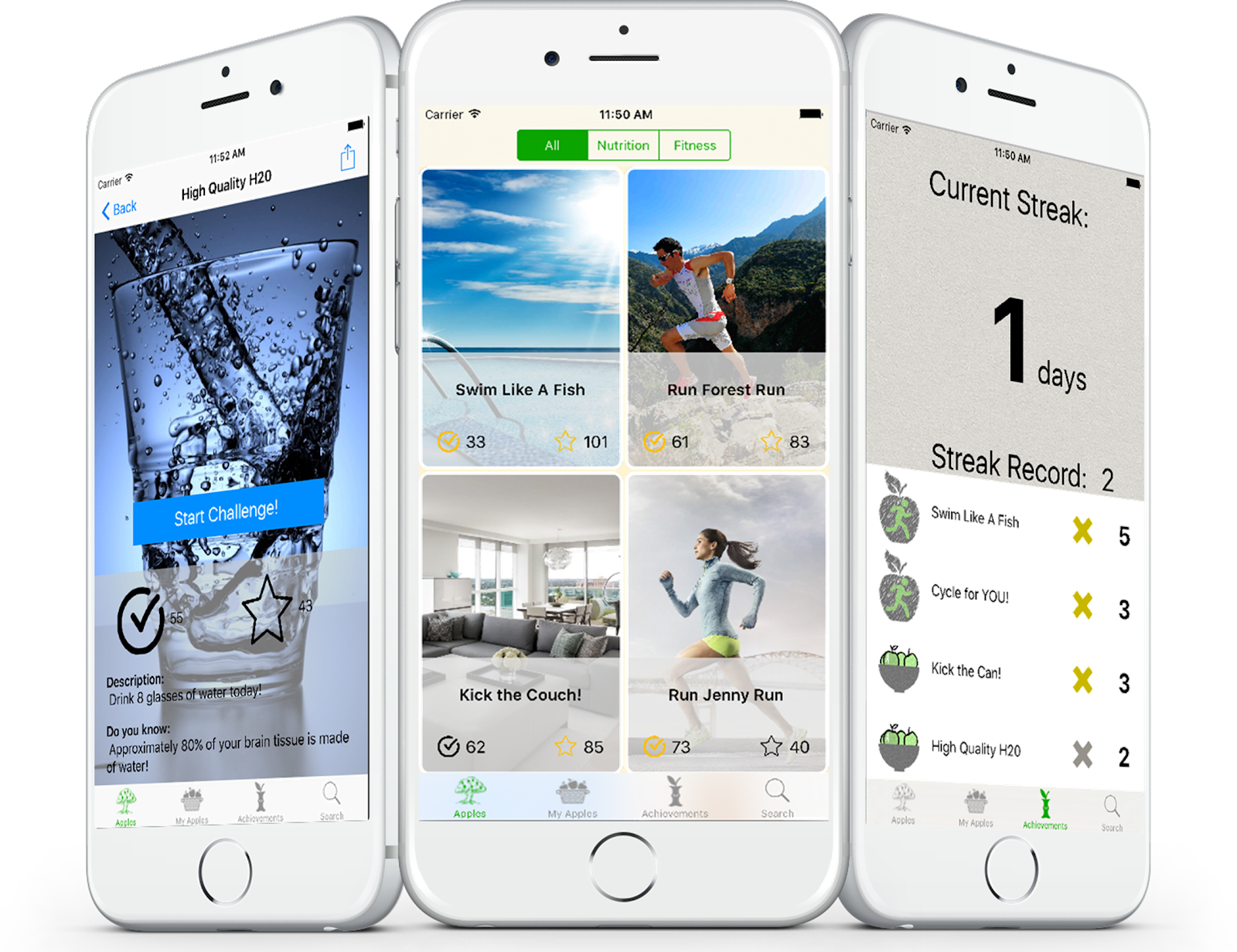
The Verizon Challenge: How might we play at the intersection of advertising and the internet of things by combining AOL and Verizon technologies?
So you went on a “rad” snowboarding trip and now you want to edit all your GoPro footage together to brag on Facebook? Well, have fun wading through 8 hours of footage looking for that one time you landed that “sick” jump.
Or maybe you don’t have to do that because a team of Cornell Tech students may have saved you the trouble.
In response to the challenge from Verizon, Team Verizon built Velozity, an iOS application that uses the sensors in your mobile device to capture the timestamp bands of stark changes in body movement and snip out the video footage corresponding to those timestamps. By simply pairing the app with a GoPro, Velozity can create a highlight reel that clips the time you got 10 feet of air so you can easily share it with your friends without having to go back and manually edit through an entire day’s worth of footage.
The idea for Velozity came after Team Verizon discovered that last year, wearable sales were up 76 percent in the action sports market, and on the slopes, action camera sales have doubled in the past four seasons. Tons of data and video footage is collected every minute, and while users have the means to share video, most of the data goes unused.
After reporting the project back to Verizon and discussing potential next steps, the team suggested building out the backend using Verizon Digital Media Services to allow users to create profiles and share their adventures. Since then, Verizon has gone on to file a patent application with the idea. Hopefully, in the near future, you’ll be able to use Velozity to easily identify and share your highlight moments with the world.
Julian Ferdman (MBA ’16), Kuo-Wei Tseng (CS ’16), Shawn Bramson (CM ’16), Margaret Barnes (MBA’ 16), Jean-Charles Gasche (CS ’16)
Media Highlights
Tech Policy Press
Content Moderation, Encryption, and the LawRELATED STORIES

New 3D Benchmark Leaves AI in Knots




